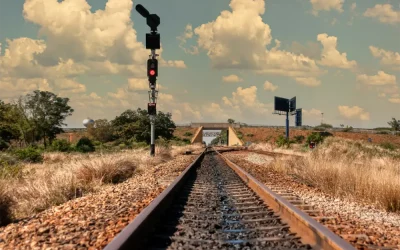Signalling Power Class II done right
Integrating advanced signalling systems into rail transport enhances safety standards while significantly optimising operational efficiency, thus facilitating a smoother and more reliable travel experience. When Signalling Power Class II is implemented effectively, it enhances communication between trains and infrastructure, making real-time data sharing a practical reality. This capability substantially mitigates the risk of accidents and service disruptions, ensuring a safer environment for all passengers. By leveraging cutting-edge technology and adhering to stringent performance standards, rail networks can achieve seamless operational coordination. This coordination ensures that every journey is not only safe but also punctual, fostering greater trust and satisfaction among passengers and stakeholders, ultimately bolstering the credibility and reputation of the rail industry as a whole.

Innovative Approaches to Class 2 Signalling
Unlocking Enhanced Network Resilience Through Class 2 Signalling
Enhancing Safety And Efficiency With Class 2 Signalling
Mitigating Environmental Impact in Design Standards
Maximising Safety And Reliability With Class 2 Signalling


Characteristics
-
Automatic Operation: The crossing is initiated automatically by the approaching train via track circuits or axle counters.
-
Half Barriers: Only cover the entrance lanes of the road (not the exit lanes), allowing any vehicles already on the crossing to clear safely.
-
Road User Warnings: Flashing red lights and audible alarms activate before the barriers lower.
-
Driver Signalling: Trains are usually not given a separate protecting signal specifically for the crossing. Instead, the crossing works automatically with the track circuits.
Differences from Other Classes
-
Class 1 signalling: Normally refers to full barrier crossings or those with direct signal interlocking, providing the highest level of road-user protection.
-
Class 3/4: Often used for footpath or user-worked crossings, which are simpler and rely more on user behaviour.
Conclusion
In practice, Class 2 signalling has become a cornerstone of the UK’s rail safety landscape, particularly at automatic half-barrier level crossings on busy regional and intercity routes. Its use allows rail operators to maintain high-speed services while protecting road users with a system that is both cost-effective and resilient. By balancing automation with built-in safety redundancies, Class 2 systems are especially valuable on corridors where traffic volumes do not warrant full-barrier installations but where speed and efficiency remain critical. From rural intersections linking small communities, to arterial roads crossing fast passenger lines, Class 2 signalling provides a dependable interface between rail and road. As the industry continues to modernise signalling standards and invest in digital oversight, the role of Class 2 technology is likely to evolve, but its applications today remain essential in ensuring the seamless coexistence of road and rail transport.

















